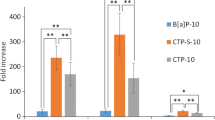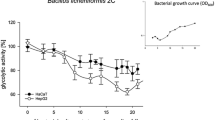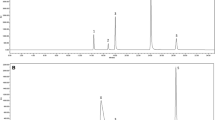Abstract
The effect of solvent polarity and lipophilicity on DNA adduct formation by polycyclic aromatic hydrocarbons in skin and lung has been studied in CD1 mice exposed cutaneously in vivo to benzo(a)pyrene (∼0.01–7.0 μg/animal) in either tetrahydrofuran or n-dodecane. The nature and amounts of DNA adducts, measured as 7R,8S,9R-trihydroxy-10S-(N2-deoxyguanosyl-3′-phosphate)-7,8,9,10-tetrahydrobenzo(a)pyrene, in relation to exposure dose and treatment regime was determined by 32P-postlabelling. In skin DNA there was a linear relationship between exposure dose and adduct formation with both solvents, though the amount of adduct formed was significantly lower from treatment with benzo(a)pyrene in n-dodecane than in tetrahydrofuran. The amounts of adducts measured in skin DNA ranged from 67 amol adducts/μg DNA at the lowest exposure dose of benzo(a)pyrene in n-dodecane to 3.5 fmol adducts/μg DNA (1 adduct in 5 × 107 nucleotides to 1 adduct in 9 × 105 nucleotides) at the highest dose. In tetrahydrofuran the corresponding levels were 89 amol adducts/μg DNA (1 adduct in 3 × 107 nucleotides) to 16.9 fmol adducts/μg DNA (1 adduct in 2 × 105 nucleotides). DNA adducts could not be detected in lung tissue following cutaneous treatment of animals with benzo(a)pyrene in n-dodecane. Cutaneous treatment of animals with benzo(a)pyrene in tetrahydrofuran, however, resulted in adducts in lung DNA at a level of 88 amol/μg DNA from exposures only at the highest dose (6.72 μg/animal). The difference in octanol-water partition coefficient, log Pow between n-dodecane compared to tetrahydrofuran is considered to be the most likely reason for the reduction in the bioavailability of benzo(a)pyrene and/or its metabolites and hence the degree of genotoxicity in tissues. The results suggest that other paraffinic hydrocarbon solvents may moderate the genotoxicity of polycyclic aromatic hydrocarbons in vivo. The assessment of the genotoxicity in vivo of mixtures of compounds should be carried out on complete mixtures of substances of interest in order to take account of these possible antagonistic or synergistic effects.
Similar content being viewed by others
Author information
Authors and Affiliations
Additional information
Received: 10 February 1999 / Accepted: 10 May 1999
Rights and permissions
About this article
Cite this article
Booth, E., Loose, R. & Watson, W. Effects of solvent on DNA adduct formation in skin and lung of CD1 mice exposed cutaneously to benzo(a)pyrene. Arch Toxicol 73, 316–322 (1999). https://doi.org/10.1007/s002040050625
Issue Date:
DOI: https://doi.org/10.1007/s002040050625




